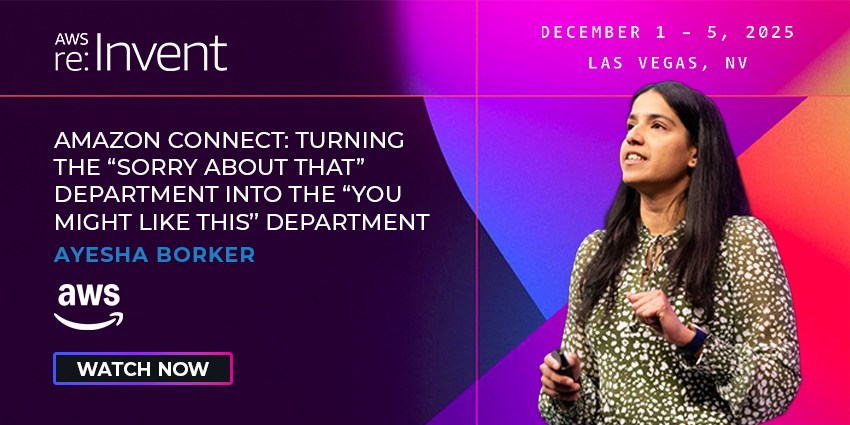According to McKinsey & Company: “Companies that adapt to the changing needs of customers will recover more rapidly and be better positioned than competitors.”
However, developing the agility to meet these changing customer needs is difficult. What’s more, new remote working environments for distributed teams present further challenges, from cloud migration to employee wellbeing.
In this edition of the CX Today roundtable, spokespeople from five leading technology vendors in the communication and collaboration space share their thoughts on overcoming these issues and much more.
This month, our expert panellists are:
- Bryce Page – Senior Product Marketing Manager at GoTo
- Mike Butts – Senior Solutions Marketing Manager at Avaya
- Louise Newbury-Smith – UK Country Manager at RingCentral
- Tim Kimber – Product Marketing Director at Vonage
- Zack Taylor – Director of Strategic Communications at Webex
Below, they answer a series of thought-provoking questions, giving advice to contact centre leaders and cross-function CX teams.
Which New CX Challenges Has Remote Working Accentuated?
Page: Managing IT teams has become trickier since companies switched to remote working, according to Forrester Research. Indeed, the analyst suggests that 82% of IT managers find it more challenging to support remote workers vs office-based workers.
As such, many teams struggle to create open lines of communication with those that maintain the enterprise ecosystem and turn visions of CX to life.
Of course, this may slow down CX projects. Yet, it may also hinder employee performance, as agents lack the same IT support that their office-based counterparts enjoy.
Butts: It is easy to walk over to a colleague and ask for assistance in the office. Remote employees often lack this face-to-face support, hindering their progress when accomplishing tasks.
Perhaps this trend impedes contact centres most, as agents frequently rely on disparate pieces of knowledge to solve complex queries. However, many operations have successfully addressed this issue by integrating their CCaaS solution with a UCaaS platform.
With UCaaS, contact centre agents can open simple communication lines with subject matter experts (SMEs) when they need to help resolving customer queries, accessing real-time support.
Also, it is critical to establish a written policy with clear rules covering job responsibilities, organisational goals and objectives, customer impact, and employees’ work performance. Protection of customer sensitive information is vital for customer-facing roles.
Newbury-Smith: Consumers recognise that many companies struggle to facilitate staff working from home – especially the customer service function. They see this problem clearly when encountering long wait times and making repeat contacts.
The problem? Sometimes it is legacy technology not pulling its weight. On other occasions, their historical culture does not allow for remote or flexible working.
Digging deeper into the latter, in 2019, less than a third of contact centres offered ‘homeworking’. Then, there existed an underlying expectation that all contact centre operations needed to run in person. After all, contact centres tend to be sociable, buzzing places. Such a dynamic is tricky to replicate in a remote or hybrid working scenario, especially if the company has an outdated system.
Kimber: Businesses must continually adapt to changes in customer expectations as a matter of course, but the pandemic made the call for business agility even louder.
Employee CX also became an important focal point as the shift to remote working accelerated. In many companies, IT services scrambled to deploy the appropriate tech and empower their teams with easy-to-access knowledge to serve customers remotely.
Finally, the need for unrestricted access to a quality internet connection has reared its head, with applications requiring high bandwidth to facilitate seamless conversations with customers.
Taylor: For many contact centres, the primary focus during the rush to remote working was ensuring connectivity. As a result, thin clients, VPN access, WebRTC desktops, high-speed internet, and other elements associated with ensuring stable and secure connectivity came to the fore.
Yet, as the environment stabilized, it became apparent that many agents enjoyed the perks of working from home. Understanding this, contact centres are preparing for the future of remote work.
The focus has shifted towards elements that ensure workforce engagement, reduce the impact of isolation, and safeguard security standards.
Creating a remote community is critical to meeting these first two challenges, while security and compliance solutions are rising in prominence to address this final concern.
Which CX Tools Are Now Mission-Critical?
Page:
As the old saying goes: “If you can’t measure it, you can’t manage it.” This notion is particularly pertinent in remote environments, where leaders have little indication of customer and employee engagement.
Analytics and reporting tools that showcase real-time, daily, and weekly metrics help, highlighting critical customer and employee experience trends.
With digital consumption increasing and larger enterprises investing in their customer touchpoints, these trends are rapidly changing. Analytics tools enable companies stay on top of the current state of play.
Butts: Virtual agents deliver conversational, 24/7 support and connect customers with a live employee when an interaction requires escalation. Such a solution offers quick responses to customers and assists remote teams in problem-solving.
Another helpful AI-driven technology is conversational Intelligence, which populates agent desktop screens with relevant information such as helpful knowledge articles, sentiment data, and performance insights.
Finally, intelligent routing applies rules to pass interactions onto agents as per customer data insights. Agents may then enjoy conversations tailored to their skills, improving day-to-day experiences.
Newbury-Smith: Workforce engagement management (WEM) tools equip contact centre leaders with critical capabilities and insights to better manage remote teams and bolster CX.
Typically, the suite of solutions includes quality assurance, workforce management, and team collaboration tools. Yet, some will also include interaction analytics, gamification, and performance management technologies.
Each of these tools can enhance CX by supporting employee experiences. In doing so, CX will likely improve. After all, as the old saying goes: happy employees = happy customers.
Kimber: Cloud communications platforms that cater for both internal and external communications have now come into the spotlight as crucial tools for CX success.
Businesses will deploy and continue employing communications APIs that allow them the flexibility to embed programmable capabilities – voice, video, messaging, and verification – directly into existing applications and workflows armed with insights from these channels.
As a result, companies can meet customers on their preferred channels, whatever and wherever they might be.
Taylor: From a contact centre agent perspective, with remote working, it is vital to have tools in place that integrate the front office with the back office.
There are two main reasons for this. First, the integration connects people. For example, a contact centre agent can quickly interact with colleagues elsewhere in other departments to find answers. Linking all parts of an organisation also makes it easy to find data.
Secondly, agents navigate fewer applications to locate the information they are looking for. In many cases, the company contains all such information within a centralized CRM – whether that is Salesforce, Service Now, or any other platform.
Which Brand Has Impressed You with Their CX from Anywhere Approach and Why?
Page: The banking app Revolut sticks out for striking the right balance of reaching out to inform me of new products and features as well as updating me about their new security policies and details on keeping my account safe and data private.
The ease of signing up to these new services and discovering additional features is seamless, as well as the new rewards they offer within their app. Revolut understands how to interact with the digital-first customer.
Newbury-Smith: While challenged by the pandemic, Ocado demonstrated real attention to detail.
For example, we have weekly Ocado deliveries to our home address. On speaking to one of the drivers recently, he mentioned that the company asked him to check the van for our cat before leaving as they knew he was an occasional stowaway!
Taylor: It may be self-serving, but I consider Webex by Cisco world-class in this regard. Yet, any company that has maintained its CX KPIs during the last two years has impressed me, considering the difficulties of distributing work remotely on a large scale.
An excellent example is T-Mobile, which sent more than 12,000 contact centre agents home within 30 days and improved their CX scores over the last year.
Which CX from Anywhere Trends Will Change the Future of CX?
Page: The autonomous customer trend will drive companies to enhance and optimise their self-service offerings, so customers can get support from anywhere.
Yet, just uploading some FAQs does not cut the mustard. The rise of digital natives has accelerated rapidly due to the pandemic – with customers demanding convenient, 24/7 access to the information they need. Video content, virtual agents, step by step guides, and ensuring the content is mobile-friendly are all key considerations.
Also, for particular scenarios where self-service fails, customers wish to enjoy a simple escalation to a human agent, who has access to the self-service journey and can pick up from the point of failure.
Butts: In today’s experience economy, many companies strive to create a customer-centric culture by empowering every employee, regardless of job title or location, to contribute to CX.
Seamless cloud-based unified communications and contact centre applications enable organisations to embrace this customer-centric culture by making every employee, not just the customer service team, responsible for customer experience.
Imagine the experience improvements companies can drive by enabling contact centre agents to easily reach SMEs located in the back office, warehouse, branch office, or a remote location, in the moment when it counts the most, to resolve customer queries quickly.
Newbury-Smith: The balance of power is shifting towards contact centre agents. Employee retention is central to customer service success with skilled resources in high demand.
The need to provide flexible working and omnichannel tools will force those companies still grappling with legacy technology and culture to leap forward.
Otherwise, not only will service experiences driven by remote agents suffer, but inevitable staff churn will also hit bottom lines.
Kimber:
Data utilisation and omnichannel experiences are more important today than ever before where CX is concerned and can redefine the future of the field.
Whether it’s SMS, email, automated chat or a phone call, agents need to have the correct information on hand to handle each query effectively.
Beyond that, customers increasingly expect to be able to contact a company through their channel of choice, at a time that’s convenient to them – and will punish companies that don’t adapt by withholding their custom. This trend will push companies to ensure a seamless, frictionless service experience is available no matter which channel a customer selects.
Taylor: As companies begin to bring people back to the office, hybrid working will evolve. As such, CX teams will become better at collaborating across departments, tapping into different resources, and speeding up digital transformation. Such acceleration is a critical CX trend, as businesses aim to keep pace with digital disruptors.
Another CX trend impacted by homeworking is the increasing emphasis on employee experience as a CX enabler. By boosting the at-home experience, improve coordination between distributed teams, and companies can create communities that inspire high work engagement.
Catch up on the previous edition of our roundtable series here: Microsoft Teams in the Contact Centre







